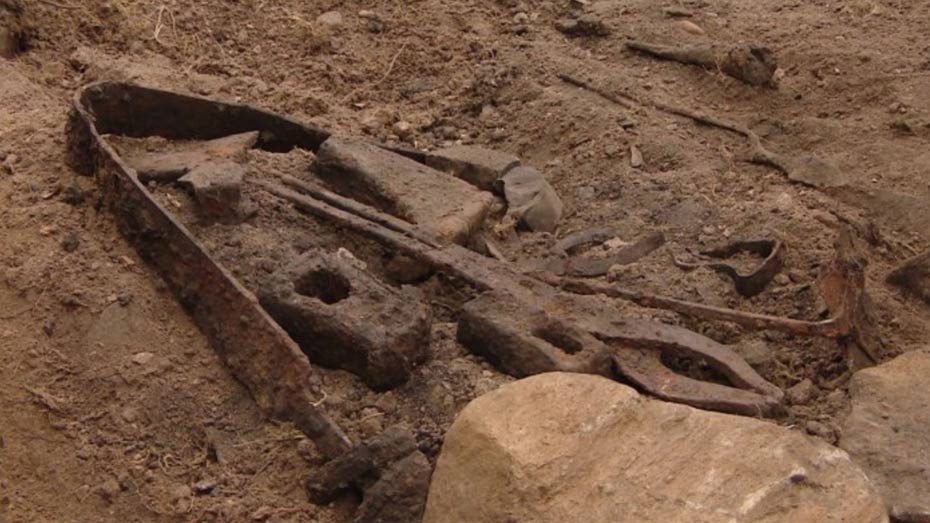Rare 9th Century Tools Discovered under Norwegian Garden, Revealing Status of Blacksmiths in Viking Age
Routine landscaping last year led to a Norwegian man inadvertently uncovering extremely rare Viking Age artifacts.
When Leif Arne Nordheim pulled up flagstones from his lawn, he revealed a rusty iron blacksmith’s hammer and tongs. Upon discovering a bent sword as well, he recognized the finds had significance and contacted archaeologists from Bergen University and the County’s Cultural Department so an excavation could be done.
As reported by ScienceNordic, the dig would become known as one of the best finds in Norway for 2014.
Asle Bruen Olsen, archaeologist from the University Museum of Bergen told ScienceNordic, “It turned out to be a fantastic discovery and one of the richest graves investigated in the past years in this area.”

Along with blacksmithing tools, personal items were found in the grave, such as clothing, scissors, and tweezers. Credit: Howell Roberts, University Museum of Bergen
Dating back to the 8 th or 9 th century A.D. in their styling, the grave goods were placed in different layers, with the order of the items indicating their status. Near the surface were found the blacksmithing tools, a sword and axe, as well as a few agricultural implements. Items found deeper down were a razor, tweezers, and scissors for beard trimming, along with a frying pan and a poker – personal items reflecting the man himself.
At the very bottom of the grave were the cremated remains of the blacksmith, with remnants of clothing, some beads, and a comb carved of bone, writes ScienceNordic. In all, around 60 artifacts were recovered from the grave, revealing not only the man’s life but also his status as a metalworker.
Blacksmiths were central figures in many ancient cultures, with Völundr featuring as a heroic master blacksmith in Norse mythology. Known for forging golden rings and setting them with beautiful gems, he featured in the Poetic Edda, a collection of ancient poems detailing Nordic literature and heritage.

An illustration of Völundr. Public Domain
Olsen said of the burial find, “We think that the blacksmiths’ contemporaries wished to show how skillful he was in his work by including such an extensive amount of objects. He might have forged many of these tools himself.”
Other noteworthy artifacts have been discovered in the area. Only a kilometer away from Leif Arne Nordheim’s home the Eggja Stone was uncovered in 1917 by a farmer ploughing a field, writes The History Blog, “The stone, found face-down over the grave of an adult male, is inscribed with about 200 runes of Elder Futhark, the oldest runic alphabet. It dates to 650-700 A.D. and is the longest surviving inscription of Elder Futhark.”

Detail of the Eggja stone, found with written side down over a grave in Norway, dated 650-700 C.E. Credit: The University Museum of Bergen
These rare blacksmith finds located in a Norwegian garden may provide insight into Viking society, and the status and significance of blacksmiths in ancient Scandinavian culture.
Featured Image: A blacksmith’s hammer and tongs, as well as a sword, are among the objects found in a garden in Sogndalsdalen. The rare find is said to date to the 8 th or 9 th century A.D. Image via NRK video
By Liz Leafloor


















